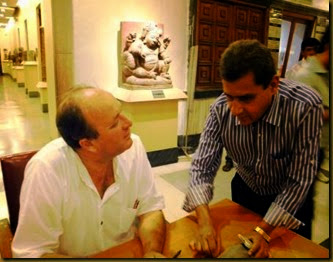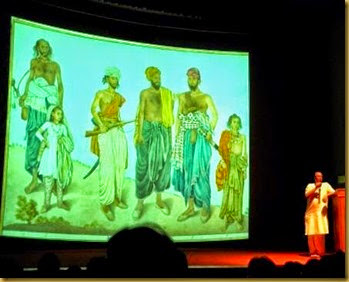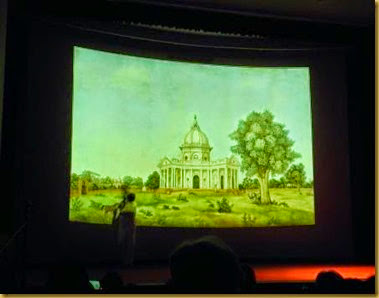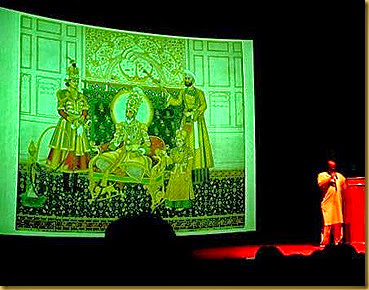Sunday the eleventh was a special day since I had the luck of attending a lecture conducted by William Dalrymple titled Princes and Painters in Mughal Delhi, 1707 – 1857 at the National Musuem, New Delhi. We (Revd. Sunil Ghazan and I) were able to meet William outside the auditorium while he was working on his laptop, searching for the relevant files to use during the lecture, and I waited patiently for him to sign my copy of The Return of The King, and of course he graciously obliged!It goes without saying that we entered an auditorium that was already jam-packed, so Reverend Sunil Ghazan and I had to thread our way through the aisles to get a couple of seats minutes before the lecture started.
Having read The White Mughals and The Last Emperor, it was easy to relate to the journey that William Dalrymple took us through, and what a remarkable journey in history it was! William took us through the golden age of Mohammad Shah, and he talked about how the tabla and the sitar found their greatest recognition in the early 1700s. He went on to describe how the word, Moghul has come to stay even today as a expression for wealth and power in today’s English usage.The age of Mohammad Shah might have included many ups and downs, but then it was also remarkable in that it saw Mohammad Shah ruling for forty years! This was a period of sensuality and pleasure as depicted in the paintings of the era. The emergence of Nadir Shah however saw a decline in the patronage of art and poetry.
William also described the entry of the British along with the East India Company into the scene. He talked about how many of the British people who held high positions in the East India Company and members of the British Army finally succumbed to the charms of the native women and the native culture of the land. It was as if they were being steadily assimilated by the Indian culture. Some of the important personalities described included David Octalone, William Frazier, Metcalf and Skinner, in whose name the St. James church has been named (pictured above).
The reign of Bahadurshah was based less on conquest and more on a more settled, moderate life devoted to the development of arts and culture although it was in 1857 that the great Sepoy revolution on of the greatest upheavals in Indian History came to be, which according to William could be better termed as The Uprising! It has been shown and proved through various sources according to William that a large number of the soldiers who mutinied against the British had in fact joined Bahadurshah Zafar. The tragedy however was that the large number of men that had joined the Emperor against the British became difficult to feed, and what they required to be an effective army was food and good leadership. They were ‘defeated by their own success’ according to William Dalrymple. The speaker also talked about how Howard Russels brought about a more positive change in journalism, and that he was probably one the few and last British who were to meet the Last Emperor in Exile in Rangoon. All this interesting information was supported by carefully selected rare paintings from that period.
Technorati Tags: A Lecture by William Dalrymple




No comments:
Post a Comment